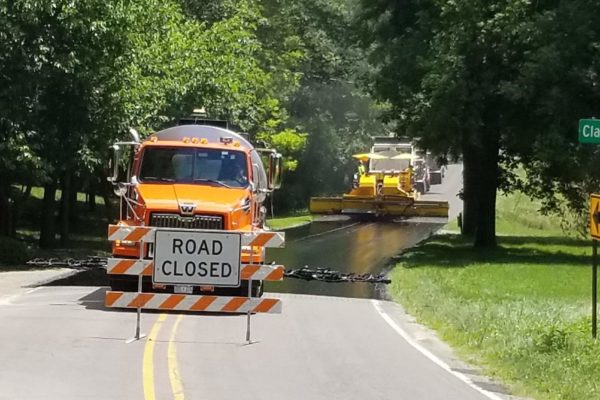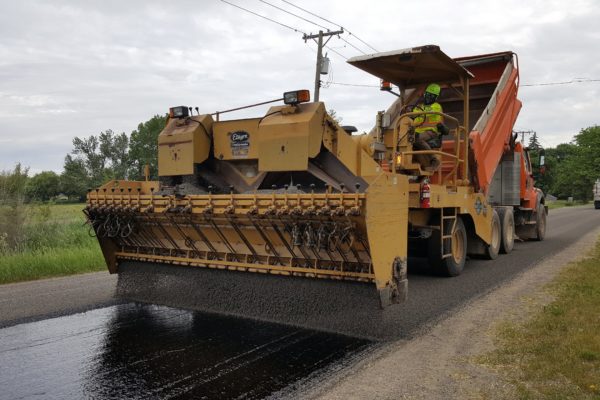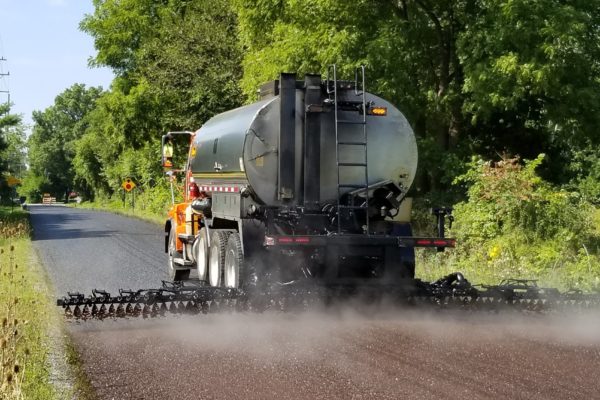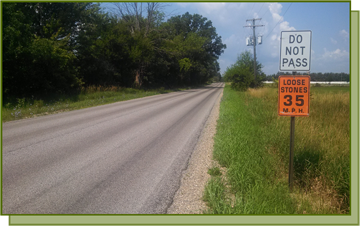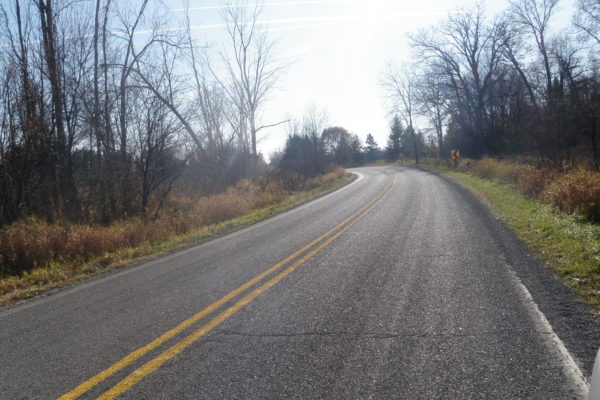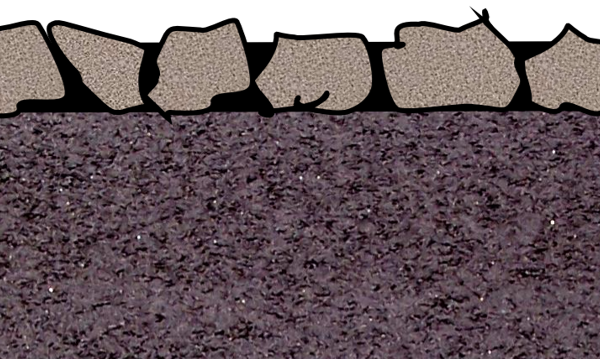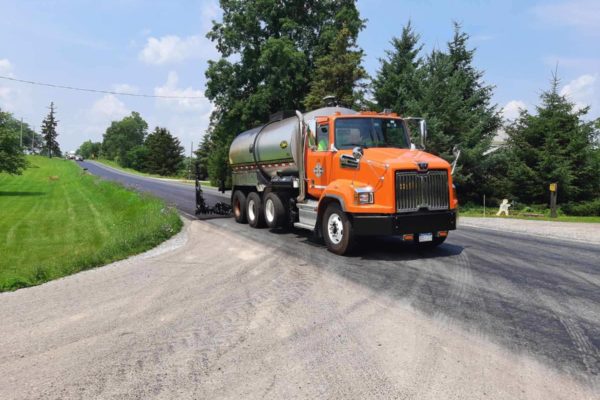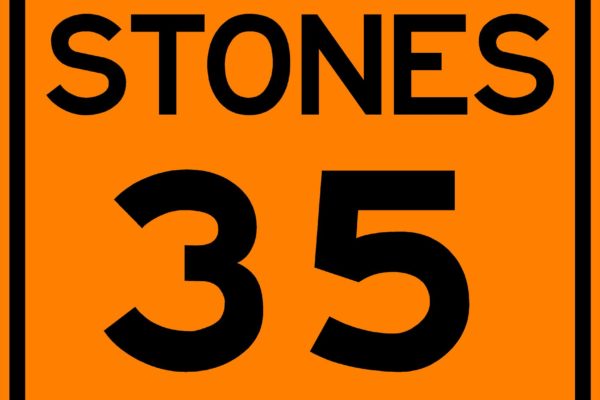Washtenaw County road users will soon see “Loose Stones – 35 mph” signs on various county roadways. These signs indicate that a road was recently chip sealed and that motorists should proceed with caution.
WCRC’s annual seal coat program is an important strategy in WCRC’s efforts to maintain its 1,600+ mile road network. When applied at the right time, a seal coat treatment can extend the lifespan of a road and help keep potholes at bay.
This summer, WCRC will seal coat approximately 33 miles of roadway. Click here to see where WCRC is working this week.
Seal coat prevents potholes and helps roads last longer.
Similar to how you seal your driveway or patio deck, WCRC applies seal coat to paved roads that are in good to fair condition to extend their lifespan and protect the road from the wear and tear of vehicles, sun damage, and Michigan’s freeze/thaw cycles which produce cracks and lead to potholes. A typical seal coat treatment will extend the service life of a road by 3 to 5 years.
Seal coat is relatively low-cost and allows WCRC to maintain more miles of road annually.
Seal coating costs a fraction of the price to rebuild a deteriorated road. A seal coat costs approximately $33,000 per mile, compared to almost $400,000 per mile to pulverize and repave a road in poor condition.
While seal coating allows WCRC to maintain more miles of road at a lower cost, it is important to note that seal coat is only a surface treatment. A seal coat will not fill potholes or fix existing bumps in the road. For this reason, it is important to apply a seal coat before the deterioration happens.
How does seal coat application work?
During chip seal, which is the first part of seal coat, a thin film of heated liquid asphalt is sprayed onto the road surface, followed immediately by the placement of small aggregate/stones (“chips”). The chips are then embedded into the liquid asphalt with rollers. Traffic can travel on the road approximately 15 minutes after the chip seal treatment is applied, but it is important that motorists do not exceed 35 mph.
Once the chip seal application has been completed, the excess stone will be swept off the road surface and within a couple of weeks WCRC crews will return to apply the fog seal.
The second part of seal coat is fog seal. A fog seal is another thin layer of liquid asphalt that helps to seal in the stones and extends the life of a chip seal. WCRC crews will apply a fog seal within a couple of weeks after a road has been chip sealed, depending on the weather. During fog seal, individual lanes or the entire road will be temporarily closed to keep vehicles from driving on the drying liquid asphalt. Once applied, fog seal can take up to a couple of hours to cure.
Once the road has been fog sealed, WCRC’s contractor will apply the permanent pavement markings.
Will this process damage my car?
Seal coat roads are safe to drive on, but it is important that motorists follow the posted advisory speed – 35 mph, to avoid vehicle damage from both the liquid asphalt and any loose stones.
The liquid used for the fog seal may take up to a couple of hours to cure after application, so it is very important for vehicles to stay off the road during this time to prevent damage to the road and vehicles.
WCRC crews will be onsite directing traffic through the use of flaggers, pilot vehicles and/or other safety signage. It is critical for motorists to follow all instructions provided in the work zone during a seal coat application to keep everyone safe and avoid vehicle damage.


